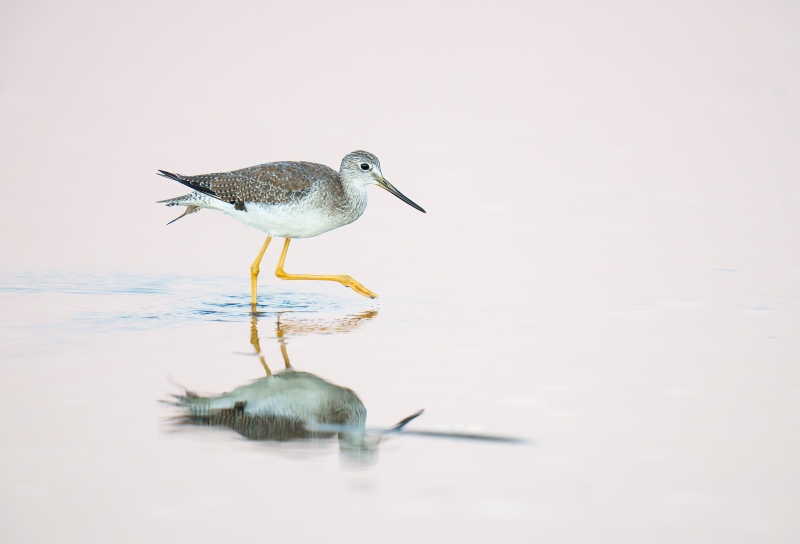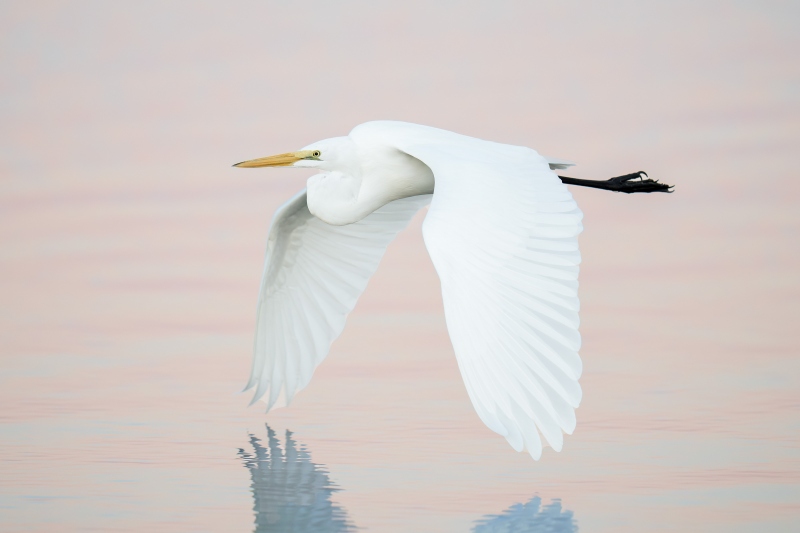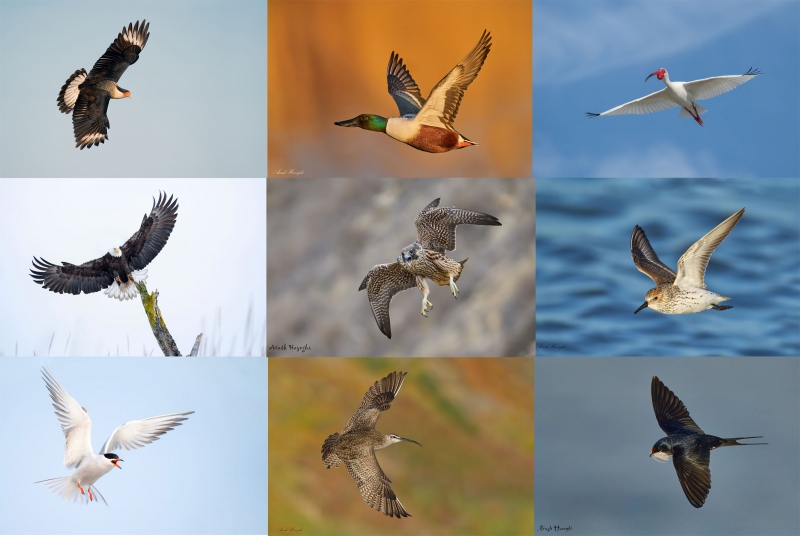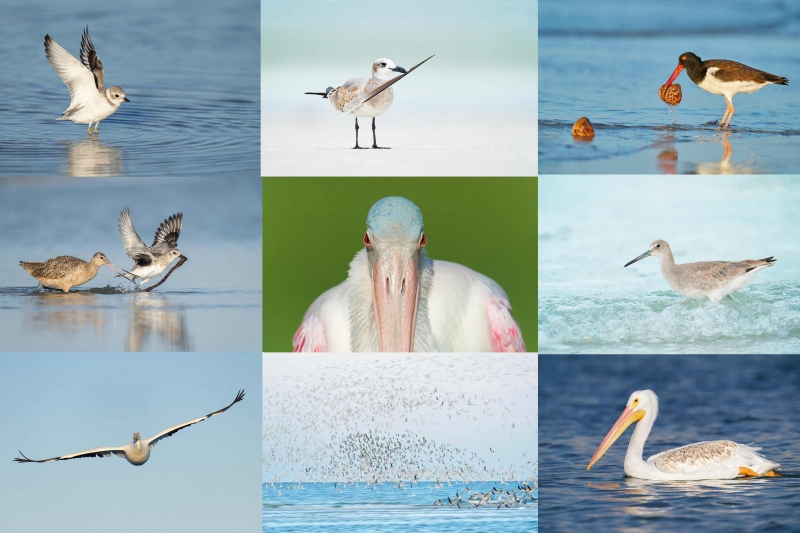Save $200!
Been thinking of an IPT? Sign up for any Instructional Photo Tour while I am in the Galapagos and enjoy a $200 discount on your balance. See the IPT schedule here and then call Jim at 863-692-0906 to leave your deposit. Hard to choose between DeSoto in the fall, San Diego for Pacific-race Brown Pelicans, or Homer, AK for Bald Eagles and more.
What’s Up?
As I am in the Galapagos leading the 2023 Photo-Cruise of a Lifetime, this is being posted automatically in abstentia. If you are interested in joining me in the Galapagos in August 2024, please get in touch via e-mail. Remember that you only live once.
I will be back in my office for a full day of work on September 14, 2023. See you then!
Today is Wednesday 30 August 2023. Wherever you are and whatever you are doing, I hope that you too have a great day.
Please remember to use the B&H and Amazon links that are found on most blog pages and to use the BIRDSASART discount code at checkout when purchasing your new gear from Bedfords to get 3% back on your credit card and enjoy free second-day air FedEx. Please, also, consider joining a BAA IPT. You will be amazed at how much you will learn!
You can find some great photo accessories (and necessities, like surf booties!) on Amazon by clicking on the Stuff tab on the orange/yellow menu bar above. On a related note, it would be extremely helpful if blog-folks who, like me, spend too much money on Amazon, would get in the habit of clicking on the Amazon logo link on the right side of each blog post when they shop online. As you might expect, doing so will not cost you a single penny, but would be appreciated tremendously by yours truly. And doing so works seamlessly with your Amazon Prime account.
If an item — a Delkin flash card, or a tripod head — for example, that is available from B&H and/or Bedfords, is also available in the BAA Online Store, it would be great, and greatly appreciated, if you would opt to purchase from us. We will match any price. Please remember also to use my B&H affiliate links or to earn 3% cash back at Bedfords by using the BIRDSASART discount code at checkout for your major gear purchases. Doing either often earns you free guides and/or discounts. And always earns my great appreciation.
|
|
B&H Bild 2023 Expo – 2 Days Of Inspiration, Learning, and Creativity: SEPT 6 & 7, 2023 |
Registration is Free!
In New York City at The Javits Center
Easily Accessible to anyone in The Tri-State Area
A Celebration of 50 Years of Creativity Through Photo, Video and Audio
Click here to learn more or to register.
More than 100 World Class Speakers
Portfolio Reviews
Photo Walks
Photo & Video Experiences
Tri-State Accessibility
Audio Experience
Contests and Prizes
Learn New Skills
Show Specials on Gear
Network with the Premier Photographers, and Videographers
|
|
|
This image was created on 8 October 2022 on an Instructional Photo-Tour at Fort DeSoto Park, south of St. Petersburg, FL. Seated on damp sand I used the handheld Sony FE 400mm f/2.8 GM OSS lens Tracking: Zone/AF-C with Bird Face/Eye detection enabled performed to perfection. Be sure to click on the image to enjoy a high-res version. Image #1: Greater Yellowlegs striding in pre-dawn light |
Shutter Priority Mode
In low light conditions at the beach, I will often work in Shutter Priority (S) mode with AUTO ISO and lots of plus compensation. Why the plus? Almost everything is a very light tone: sky, water, and sand. To expose to the right you need to add two stops or more of light. I can be doing slow shutter speed blurs of individual birds or flocks in flight, and if I need to make sharp images of birds on the ground or in the water, I can simply raise the shutter speed quickly while maintaining the proper exposure. If you are working in Manual mode as we usually do once the sun is up, you would need to change two parameters (shutter speed and ISO) rather than just one in an Automatic exposure mode like S.
Questionable Shutter Speed and Sharpness
Handholding 560mm at 1/500 sec. was pushing it a bit. There was quite a bit of motion blur on the head. Working on a new layer, I painted a mask of the head in Topaz Sharpen AI, chose Motion Blur, and went with the recommended settings. After it rendered, I enlarged the image in Photoshop and noted that the sharpening was overdone. I reduced the opacity of the layer to 75% and was happy with the improvement.
A better plan might have been to remove the TC and and shoot at 1/1000 sec. at the same (very high) ISO.
Remember!
It is important to remember that image stabilization (Optical Stabilization System — OSS — in Sony) can correct for lens shake, but it cannot correct for subject movement.
|
|
|
This image was created on 31 October 2022 on an Instructional Photo-Tour at Fort DeSoto Park, south of St. Petersburg, FL. Standing at full height, I used the handheld Sony FE 400mm f/2.8 GM OSS lens and The One, the Sony Alpha 1 Mirrorless Digital Camera). The exposure was determined via Zebra technology with ISO on the Thumb Dial. ISO 5000. 1/1600 sec. at f/2.8 (wide open) in Manual mode. When evaluated in RawDigger, the raw file brightness was determined to be perfect (ho hum). AWB at 7:40:19am on clear but hazy morning with some low clouds on the eastern horizon. Tracking: Zone/AF-C with Bird Face/Eye detection enabled performed to perfection. Be sure to click on the image to enjoy a high-res version. Image #2: Great Egret in flight in soft, early morning light |
Pushing it on the Flight Shutter Speed
In the The Art & Science of Photographing Birds in Flight with the Sony α-1, we recommend that folks use a shutter speed of at least 1/3200 second for their flight photography. We do, however, follow that up with this:
With larger, slower flying subjects you can often get away with shutter speeds ranging from 1/1600 to 1/2500 second.
As Great Egrets qualify as larger, slower flying subjects, I followed our advice for Image #2 and was able to produce a razor-sharp-on-the-eye image.
High ISOs with the Sony α-1
To my eye, today’s two featured images look pretty good at ISO 10000 and ISO 5000 respectively. WDYT?
The Sony 400mm f/2.8
After four decades of recommending against lenses in this class, I tried one while photographing Bald Eagles in Homer two years ago and immediately fell in love with it. The super-wide f/2.8 aperture is a huge advantage when photographing in pink light. At Fort DeSoto, I often opt to head out into the field with this lens, no tripod, and both TCs in my fanny pack. In San Diego, it is perfect when working the pelicans on the main cliffs. Now that I own one, I always bring it to Homer. For the Galapagos trip, I left the 600mm f/4 at home and took the 400mm f/2.8 as my workhorse telephoto lens. It is easy to handhold. I love using the foot pod technique with it to get low. And the f/2.8 aperture is quite useful in the often cloudy or overcast conditions that we pray for.
There is a ton of incredibly valuable information on the Sony 400mm f/2.8 OSS lens in the The Art & Science of Photographing Birds in Flight with the Sony α-1.
|
|
|
Click on the composite to view a larger version and be even more impressed. The Art & Science of Photographing Birds in Flight with the Sony α-1
|
The Art & Science of Photographing Birds in Flight with the Sony α-1
by Arash Hazeghi and Arthur Morris
First of all, if you use Nikon or Canon (or Olympus or Fuji) gear, do not be put off by the title. While a portion of the guide deals with the Sony α-1, there is a ton of priceless information, tips, and techniques that can help you become a better flight photographer. No matter what system you are using. If you don not use an α-1, be sure to read down to the bottom to save a few bucks.
Arash Hazeghi and Arthur Morris have created the definitive and most comprehensive ever treatise on photographing birds in flight. With more than sixty years of experience photographing birds, they know what you need to know but have not figured out yet! You will be astounded by the depth of their knowledge and the tips they have to offer. More than six months in the making, the guide contains 229 pages, 24,321 words,97 exceptional and inspirational flight images — each with a legendary, enlightening BIRDS AS ART caption, and 22 screen captures. The guide contains a wealth of useful, practical, and for the most part — never-before-available information.
Purchase
Click here to purchase your copy in the BAA Online Store.
What Everyone Will Learn
We will teach you the basic concepts that you need to master to become a great flight photographer along with the techniques used by the world’s best flight photographers.
You will learn that most any telephoto lens can be perfect for flight photography in a given situation; focal lengths for the images in the book range from 200mm to 1200mm and everywhere in between.
We discuss the merits of various lenses in depth, including and especially comparing the 400mm f/2.8 lenses with the 600mm f/4s.
We guide you in getting your hands on the flight photography lens that will best meet your needs. We offer a variety of handholding and rest position tips and include tips on working with a big lens on a tripod when working with a flight lens that is otherwise too heavy for you.
Both authors offer their thoughts on getting the right exposure when photographing birds in flight. You will learn to get the right exposure on foggy days and even when photographing black birds in white sky conditions.
You will learn the tremendous importance of pre-focusing, of finding the bird in the viewfinder quickly, acquiring focus almost instantly (with tips on doing all three).
You will learn the role of image stabilization in flight photography and the best settings.
Both authors share their thoughts on using the focus range limiter switch. In the same vein, you will learn to use Direct Manual Focus to make your flight photography life easier.
All will learn about the best wing positions and the importance of the background with images of birds in flight. With lots of examples.
You will learn about the best shutter speeds (and the best aperture) to use when photographing flying birds.
You will learn to photograph flight while seated and the many advantages of doing so.
You will learn the best methods of controlling high ISO noise.
All will learn to properly and safely format their flash cards.
You will learn what to do when your AF system is temporarily blinded.
All will learn the huge effect that wind strength and direction has on flight photography and to evaluate the quality and direction of the light on both sunny and cloudy days.
You will learn why it is vitally important to shoot aggressively when photographing birds in flight.
You will learn to carefully observe and evaluate a variety of bird behaviors that may shine light on some excellent opportunities for photographing birds in flight. And about getting into the best position from which to photograph.
You will learn to be a much better flight photographer.
What Sony Folks Will Learn
Exactly how Artie uses Zebras to come up with perfect exposure after perfect exposure.
The fine points and recommended settings for Optical Steady Shot (OSS).
The concept of Auto-Focus (AF) tracking in the α-1.
Everything there is to know about the complex Sony autofocus system.
About all the AF patterns, how to quickly switch them, and about those favored by each author. And why.
The Tracking and Non-tracking AF patterns. When and why Arash uses Non-Tracking Zone. And why Artie uses only two AF patterns.
How to set and use Bird Face-Eye detection for flight photography.
How and why to assign various custom functions to the various programmable buttons on the α-1 body.
The perfect settings for the many, many Menu items that are vitally related to flight photography.
How and why the Sony α-1 uses both contrast and phase detection AF to determine focus (and the benefits thereof).
Which are the best memory cards for the Sony α-1.
To quickly access frequently used menu items.
Non-Sony α-1 Discount
Using the honor system, folks who do not use a Sony α-1 body are invited to click here to save $25.00 on the purchase price of the guide.
Via Text from Andrew Schonbek
Thanks for the great DeSoto IPT, Artie. It was an eye-opening experience in many ways. I have lots to work on and practice in the aftermath. Looking forward to learning more in the future. Andrew
Via Text from Stu Goz
Much love and respect to you. On the 3rd DeSoto IPT you shared a million dollars’ worth of insight for pennies.
Via e-mail from Stu Goz
Here’s cliche number one: I don’t write reviews.
Cliche number two: I’m making an exception in this one case.
I am writing this a week after my first IPT because I needed to let it all sink in properly – I needed to decompress. I’m probably not fully there yet, even now, but it’s time.
My biggest take-away is that Artie’s masterpieces are well-earned. There was never a time when I’ve seen someone work harder than he did. It was inspirational, humbling, and fascinating to watch him. Once he was in his element, the magic started immediately, and his passion was apparent for the duration of each session. My next takeaway is how unbelievably gracious, honest, and generous he is. Anyone who follows his blog already knows this (and if you don’t, you should), but Artie is an educator to the core. He is quick to explain his thought processes at any time, and leads by example.
After each session, we had a nice meal and discussed what made good photos good and bad photos bad. Enlightening. And sometimes sad. But so much better for it all. These days, more than any other time, it is the extra effort that separates the pros from the amateurs – getting low in the muck, as needed – knowing when to move, and when to stay, and doing it unwaveringly. I created so many images that I’m proud of. Artie has a great way of teaching without belittling, which keeps your mind open to his many lessons.
Artie, you are a national treasure, a never-ending source of inspiration, and a perfect mentor. I wish I could shoot right next to you every weekend.
I hope to see you again soon; your friend.
Stu Goz
|
|
|
All images from SEPT/OCT/NOV at Fort DeSoto. Click on the image to enjoy a larger, sharper high-resolution version. Clockwise from upper left to center: Piping Plover flapping after bath, juvenile Laughing Gull with feather, American Oystercatcher with sea urchins, Willet foraging in surf, American White Pelican juvenile swimming, skimmer/tern/shorebird blast-off blur, American White Pelican in flight, Black-bellied Plover stealing lugworm from Marbled Godwit, Roseate Spoonbill staring. |
Fall 2023 Fort DeSoto Instructional Photo-Tour #1
3 1/2 Days: Tuesday 26 September through the morning session on Friday 29 September 2023. $1899.00 includes three working lunches. Limit six photographers.
Fall 2023 Fort DeSoto Instructional Photo-Tour #2
3 1/2 Days: Tuesday 17 October through the morning session on Friday 20 October 2023. $1899.00 includes three working lunches. Limit six photographers.
Fall 2023 Fort DeSoto Instructional Photo-Tour #3
3 1/2 Days: Tuesday 30 October through the morning session on Friday 3 November 2023. $1899.00 includes three working lunches. Limit six photographers.
Fall 2023 Fort DeSoto Instructional Photo-Tour #4
3 1/2 Days: Tuesday 14 November through the morning session on Friday 17 November 2023. $1899.00 includes three working lunches. Limit six photographers/Openings: five.
Fall Bird Photography at Fort DeSoto
Fort DeSoto, located just south of St. Petersburg, FL, is a mecca for migrant shorebirds, terns, and gulls in fall. There they join hundreds of egrets, herons, and night-herons that winter on the T-shaped peninsula. With any luck at all, we should get to photograph one of Florida’s most desirable shorebird species: Marbled Godwit. Black-bellied Plover and Willet are easy, American Oystercatcher is pretty much guaranteed. Great Egret, Snowy Egret, Great Blue Heron, Tricolored Heron, and White Ibis are easy as well and we will almost surely come up with a tame Yellow-crowned Night-Heron or two. And there should be some quality Brown Pelican flight photography. In addition, Royal, Sandwich, Forster’s, and Caspian Terns will likely provide us with some good flight opportunities as well. Though not guaranteed, Roseate Spoonbill and Wood Stork might well be expected. And we will be on the lookout for a migrant passerine fallout in the event of a thunderstorm or two.
On this IPT, all will learn the basics and fine points of digital exposure. Nikon and Canon folks will learn to get the right exposure every time after making a single test exposure, and SONY folks will learn to use Zebras so that they can be sure of making excellent exposures before pressing the shutter button. Everyone will learn how to approach free and wild birds without disturbing them, to understand and predict bird behavior, to identify many species of shorebirds, to spot the good situations, to choose the best perspective, to see and understand the light, and to design pleasing images by mastering your camera’s AF system. Most importantly, you will surely learn to evaluate wind and sky conditions and understand how they affect bird photography. And you will learn how and why to work in Manual mode (even if you’re scared of it). The best news is that you will be able to take everything you learn home with you so that you will be a better photographer wherever and whenever you photograph.
|
Clockwise from upper left to center: Long-billed Curlew, juvenile Tricolored Heron, Marbled Godwits, Great Blue Heron, juvenile Pectoral Sandpiper, Wood Stork, smiling Sea Scallop, Ruddy Turnstone scavenging needlefish, Great Blue Heron sunset silhouette at my secret spot, and southbound migrant tern flock blur. |
The Details
There will be a Photoshop/image review session during or after lunch (included) each full day. That will be followed by Instructor Nap Time.
These IPTs will run with only a single registrant (though that is not guaranteed). The best airport is Tampa (TPA). Once you register, you will receive an e-mail with Gulfport AirBnB/VRBO information. If you register soon and would like to share an AirBnB with me, shoot me an e-mail. Other possibilities including taking a cab to and from the airport to our AirBnB and riding with me for $50/day. This saves you both gas and the cost of a rental car.
A $600 deposit is due when you sign up and is payable by credit card. Balances must be paid by check one month before the trip. Your deposit is non-refundable unless the IPT sells out with six folks, so please check your plans carefully before committing. You can register by calling Jim during weekday business hours at 863-692-0906 with a credit card in hand, or by sending a check as follows: make the check out to: BIRDS AS ART and send it via US mail here: BIRDS AS ART, PO BOX 7245, Indian Lake Estates, FL 33855. You will receive a confirmation e-mail with detailed instructions, clothing, and gear advice. Please shoot me an e-mail if you plan to register or if you have any questions on lodging.
Up Early, Stay Out Late!
Obviously, folks attending an IPT will be out in the field early and stay late to take advantage of the sweetest light and sunrise and sunset colors (when possible). The good news is that the days are relatively short in early fall. I really love it when I am leaving the beach on a sunny morning after a great session just as a carful or two of well-rested photographers are arriving. On cloudy days, we may — at the leader’s discretion, stay out in the morning for a long session and skip the afternoon session. To ensure early starts, breakfasts will be your responsibility. And so that we can get some sleep, dinners will sometimes be on your own as well.
Typos
With all blog posts, feel free to e-mail or to leave a comment regarding any typos or errors.




















Beautiful images, especially the wing position of the GREG, and great use of f2.8 to capture action together with that wonderful low-light pink water.
Image #1 Greater Yellowlegs striding and Image #2 Great Egret in flight are both interesting and cute! And the other three pictures of 9 birds or 8 birds is also well made and interesting!